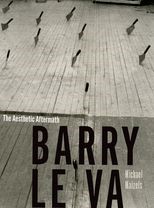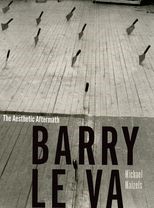Barry Le Va: The Aesthetic Aftermath
Barry Le Va: The Aesthetic Aftermath
Cite
Abstract
In the late 1960s, the artist Barry Le Va began to use non-traditional materials (shattered glass, spent bullets, sound recordings, scattered flour, and sharpened meat cleavers) to execute a striking body of sculptural installations. Taking inspiration from popular crime novels and contemporary art theory, Le Va conceived of these works as an aesthetic aftermath. He charged his viewers to act like detectives at a crime scene, attempting to decipher an order underlying the apparent chaos. In addition to the aesthetic charge of its scattered visual poetry, Le Va’s work is compelling because of how clearly it articulates the web of perceived connections autonomous art objects, conservative politics and scientific objectivity. The artist's ephemeral installations were designed to erode not simply the presumed autonomy of the art object but also the economic and political authority of the art establishment. And while their unstable nature echoed the broad counter-cultural agitation against the social and political status quo, their embrace of impermanence was also informed by scientific discourse. Indeed, Le Va’s work reflects the degree to which engagement with scientific and mathematical topics such as entropy and information theory forms a significant but under-examined thread running through much of the most important sculpture of the late 1960s. In essence, Le Va’s aim to “keep the piece in a suspended state of flux, with no trace of a beginning or end” sought to challenge the metaphysics of stability that underpinned the interlocking assumptions behind blind faith in lasting beauty, just government and perfectible knowledge.
Sign in
Personal account
- Sign in with email/username & password
- Get email alerts
- Save searches
- Purchase content
- Activate your purchase/trial code
Institutional access
-
Sign in through your institution
- Sign in with a library card Sign in with username/password Recommend to your librarian
Institutional account management
Sign in as administratorPurchase
Our books are available by subscription or purchase to libraries and institutions.
Purchasing information| Month: | Total Views: |
|---|---|
| April 2023 | 1 |
| September 2023 | 1 |
| March 2024 | 1 |
| March 2024 | 1 |
| March 2024 | 2 |
| March 2024 | 1 |
| March 2024 | 1 |




Get help with access
Institutional access
Access to content on Oxford Academic is often provided through institutional subscriptions and purchases. If you are a member of an institution with an active account, you may be able to access content in one of the following ways:
IP based access
Typically, access is provided across an institutional network to a range of IP addresses. This authentication occurs automatically, and it is not possible to sign out of an IP authenticated account.
Sign in through your institution
Choose this option to get remote access when outside your institution. Shibboleth/Open Athens technology is used to provide single sign-on between your institution’s website and Oxford Academic.
If your institution is not listed or you cannot sign in to your institution’s website, please contact your librarian or administrator.
Sign in with a library card
Enter your library card number to sign in. If you cannot sign in, please contact your librarian.
Society Members
Society member access to a journal is achieved in one of the following ways:
Sign in through society site
Many societies offer single sign-on between the society website and Oxford Academic. If you see ‘Sign in through society site’ in the sign in pane within a journal:
If you do not have a society account or have forgotten your username or password, please contact your society.
Sign in using a personal account
Some societies use Oxford Academic personal accounts to provide access to their members. See below.
Personal account
A personal account can be used to get email alerts, save searches, purchase content, and activate subscriptions.
Some societies use Oxford Academic personal accounts to provide access to their members.
Viewing your signed in accounts
Click the account icon in the top right to:
Signed in but can't access content
Oxford Academic is home to a wide variety of products. The institutional subscription may not cover the content that you are trying to access. If you believe you should have access to that content, please contact your librarian.
Institutional account management
For librarians and administrators, your personal account also provides access to institutional account management. Here you will find options to view and activate subscriptions, manage institutional settings and access options, access usage statistics, and more.